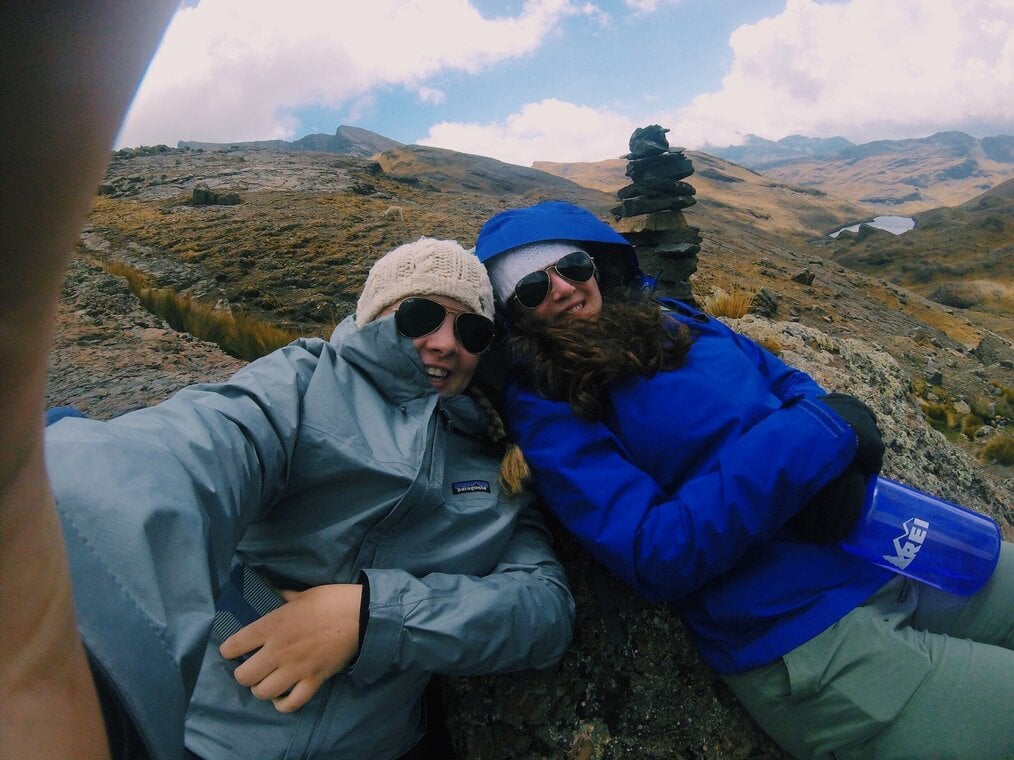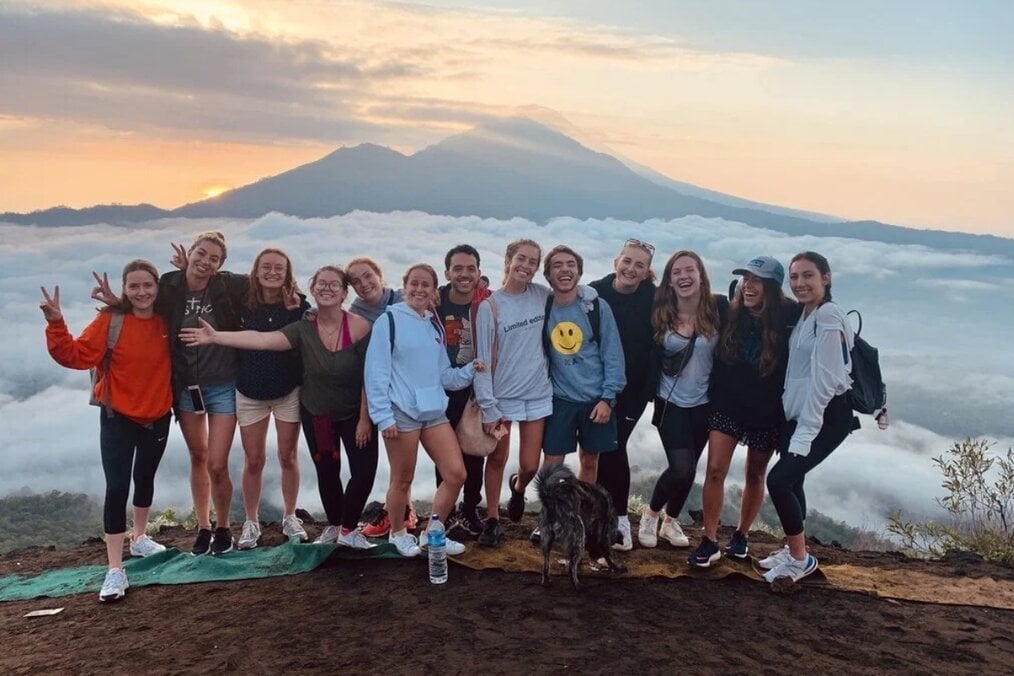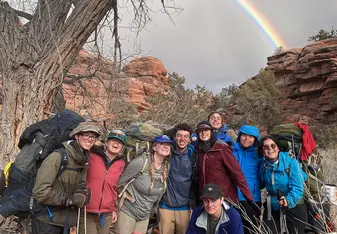
How to Plan a Gap Year in 2025
Learn how to plan the ultimate gap year from experiential and gap year experts who have advising students for over 25 years!
Key Takeaways 🔑
- Your gap year is uniquely yours. To craft the gap year that is right for you, consider your interests, physical and mental health needs, desire for peers or structure, and budget.
- Spend around 15 minutes a day planning your gap year. Take notes as you compare program websites, read alumni reviews, and attend webinars.
- Gap years don’t have to be international. There are plenty of exciting programs here in the U.S.
- Outline your budget and costs early, that way you’ll have more time to plan, earn, and save. Plenty of gappers work during their gap years too!

The early stages of planning a gap year may be a bit overwhelming: you're not sure what you want to do, there are so many options to choose from, none of your friends are taking gap years, and the costs seem high. Understandably, hopeful gappers can often get discouraged early in the planning process.
If that sounds like you, or your high school or college student, you've come to the right place! As experiential and gap year experts advising American students for over 25 years, we know that, equipped with some effective strategies and concrete action steps, you can navigate your questions and options to plan a fun and fulfilling gap year.
To Learn More About How to Take a Gap Year
Gap year planning strategies
As a start, keep leading with the same curiosity and courage that brought you here. Try as best you can to leave negative thoughts or limitations out of the initial process. Dreaming about your gap year should be exciting and inspiring. Sure, there's a lot to figure out, but take it step by step using these strategies.
- Start brainstorming: The beauty of your gap year is that it is uniquely yours. Start brainstorming to help get the inspiration flowing, there are no right or wrong ideas!
- Define important criterias: Do you have mental, physical, or budgetary requirements? Consider what you need to ensure that your gap year is a successful one! To help you get started we’ve created this useful set of worksheets for you!
- Research & take notes: With your gap year goals in sight, your research criteria are now more refined. For any gap year options that fit your criteria, review their websites, follow their social media, attend their webinars, read program highlights, and compare gap year programs and reviews. Dedicate a notebook, Google Doc, or spreadsheet to record your thoughts and research, doing this from the start will keep everything organized!
- Time your gap year: People take gap years at all different stages of life. Many find that between graduating high school and starting college is the perfect time for personal growth through travel. If you're serious about taking a gap year before college, factor that into your college research. For example, some schools like Florida State University and Duke University offer scholarships for their gap year students.
- Reach out: Reach out to program organizers and alumni members to familiarize yourself with the people behind the program. The USA Gap Year Fairs from January-February offers in-person and virtual opportunities to meet some of the most respected experts in our field. You'll hear a presentation from Gap Year Accredited Consultants - like us! - and then have the chance to meet upwards of 30 gap year programs.
Pro Tip: Try spending 15 minutes a day planning your gap year! Whether you research programs, speak to counselors, or read reviews, you'll be amazed how much progress you make with consistency!
Planning a domestic gap year

You don't have to travel the world (or even far from home) to have an inspiring and life-changing gap year. In fact, plenty of amazing programs and experiences can be accessed right here in the U.S. From wilderness adventures and urban internships, to community service placements and social justice programs, exciting learning opportunities can be found all across the country.
Taking a gap year is about stepping out of a space that is comfortable for you, and instead, immersing yourself in your ‘stretch zone’. It can be a great time for you to build confidence and independence as you transition into the adult chapters of your life.
Benefits of a gap year in the U.S.
- Cost: Domestic experiences generally cost less than going abroad. Even if you select a fee-based gap program, inevitably you’ll pay less for flights and get to avoid the costs of a passport, visas, immunizations, and travel insurance.
- Health Considerations: Access to consistent and high-level medical care is far more predictable in the United States than in many parts of the world. Staying domestically is also generally associated with lower exposure to tropical diseases and the need to incorporate unfamiliar prevention regimes into our travels.
- Comfort zone: Staying Stateside allows us to focus our ‘stretch zone’ on engaging in a new environment or skill rather than tackling those factors and a new language or significantly different cultural norms. By limiting the challenges of the experience to one or two elements, we are more likely to integrate learning in real time.
- Work: It comes as a surprise to many potential gappers that it is difficult for an 18-year old to be legally employed outside of the U.S. American citizens have a much easier time finding paid work here than they will abroad, and can generally save on housing costs by living with family or friends. Work exchange options on farms, ski mountains, and camps are widely available, and seasonal employees are always needed in the US.
Explore Gap Year Programs in the U.S.
separator_solidPlanning an international gap year

If traveling outside of the U.S. is high on your bucket-list, the options are almost endless. Immersing yourself in another culture and/or language setting can be one of the most rewarding benefits of taking a gap year. Not only do we build empathy when we step into the daily rhythm of someone else's life, we also cultivate curiosity that helps us reflect on our own life through new lenses.
Whether you want to live with a homestay family, learn a new language, volunteer for a grass-roots organization, or clarify your career path through an internship, a gap year abroad leads to remarkable learning experiences.
Crafting a gap year abroad takes pre-planning and a spirit of adventure. While a great plan affords a lot of comfort, it’s equally important to have the courage to be spontaneous with unexpected opportunities, which often lead to some of the most memorable experiences while traveling.
If you do decide to venture abroad, be sure to monitor your destination’s requirements for entry.
Tips for selecting your international travel destination
- Budget for expected and unexpected costs: Flights, transfers, passports, visas, travel insurance, lodging, meals, and excursions can quickly take a huge bite out of any budget. Get clear on your priorities and what you value before you depart. For example, if you can handle three layovers to save a few hundred dollars on your flight, that money is now available for other things you value more.
- Prioritize your health Whether you're hiking in Nepal or taking selfies at the Eiffel Tower, one of the biggest challenges for travelers abroad is understanding the systems for accessing health care. Do research before you go, ask program providers for advice, and, under all circumstances, purchase comprehensive travelers insurance!
- Consider your comfort zone: Too much unfamiliarity can be overwhelmingly stressful and stifle growth. Find balance in your travels and have your first gap experience offer both components that you feel confident in, as well as those that challenge you. Once those ‘stretch’ areas feel more familiar, you can continue to add in more challenge.
- Try working during your gap year 'Working abroad’ on a gap year can mean getting a Working Holiday Visa in Australia or New Zealand or committing to a work exchange position such as being an au pair that provides housing and food in exchange for child care. Whether you make a little cash to offset travel expenses or save on your spending with a cost-neutral opportunity, working abroad is a great way to meet locals and really feel like you are a part of the community.
Explore gap year programs abroad
How to fund your gap year

This is one of the biggest questions many gappers face: “How much does a gap year cost, and how am I going to pay for it?”
Funding your gap year is important to address early on in your planning process, but at the risk of sounding like a broken record, we really want you to do the big dreaming and brainstorming first! Identify your goals, gather information about different gap year opportunities that both exist and interest you, and then get to the task at hand: assessing your resources and what it's going to take to help you meet your gap year goals.
- Set a budget: Talk to your parent or guardian about your gap year budget. Consider how long your gap year will be and expenses such as flights, accommodation, program fees, excursions, travel, and more before estimating a monthly budget.
- Have a safety net: It's a good idea to have a safety net in the event of unforseen circumstances. Whether it be a missed flight, medical fees, or you went traveling more than you thought, a safety net will provide you extra support on your gap year.
- Get a job: Many gappers will devote some of their gap year working to make and save money to put towards their gap years. Whether you work at home or abroad, it's a great way to gain experience, build your resume, and earn a salary. there are a handful of countries that issue Working Holiday Visas for young American travelers -- you may not save much of your paychecks, but they will cover the costs of your trip and create lifetime memories!
- Consider a work exchange: Organizations such as WWOOF allow you to volunteer in exchange for housing and meals. Whether you're WWOOFing on an olive farm in Italy or a vineyard in California, or you're an au pair in France, work exchange is meaningful, immersive and great on a budget.
- Apply for scholarships and grants: Many gap year organizations offer scholarships and grants. Be sure to apply early. Additionally, many gap year programs offer college credit through a partner university. It may be possible to use your 529 funds to pay for the college credit fee and the program’s tuition, but contact your financial advisor first to confirm eligibility.
Explore Go Overseas’ nomad essentials
Here at Go Overseas, we love making travel easier! To support your globetrotting lifestyle, we've partnered with a range of major companies to provide you with discounts on things like travel insurance, accommodation, and more. Check out our nomad essentials to stock up on everything you need!
Ready to take a gap year in 2025?

Taking a gap year is about choosing a path of real-world experiences on the way to the next chapter of your adult life. During that time you will apply the knowledge that you have gained at home and in school, challenge yourself in new environments, and integrate this unique learning into your next level of independence, confidence, perspective and resiliency.
Planning a gap year takes time, intention, and resolve. Like anything worth doing in this life, the more care you put into this process of planning, the more you will get out of the gap year itself. Begin early, take detailed notes, talk with former gappers, and seek expert advice. If you found the ideas in this article helpful, consider setting up a free brainstorming session with an Accredited Gap Year Consultant like J2Guides!












